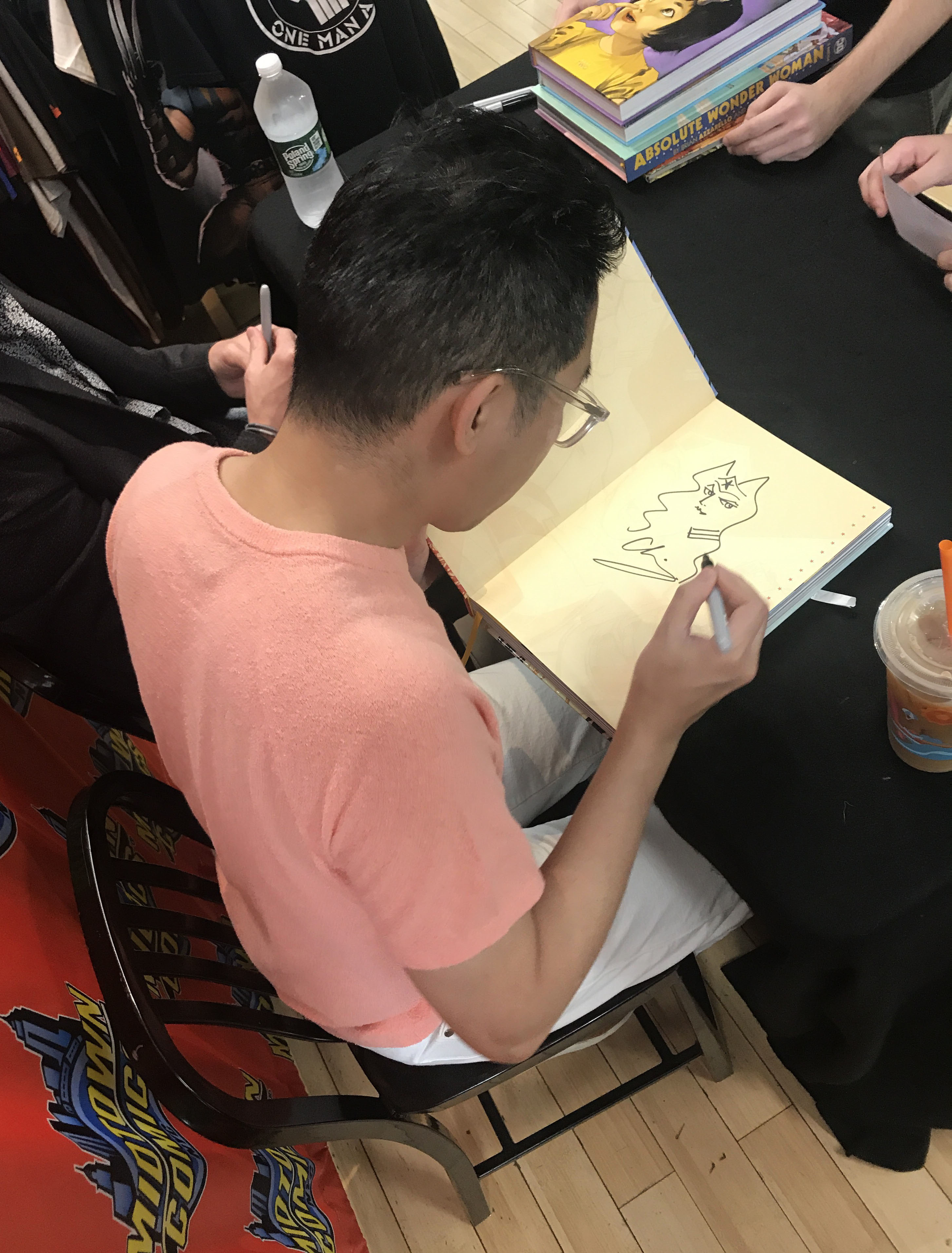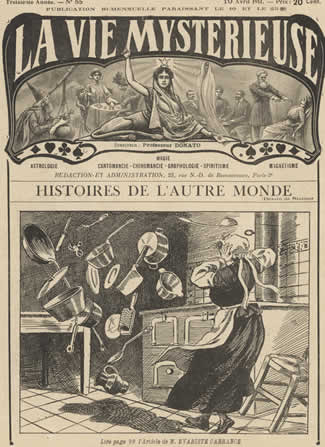|
Magician From Mars
The Magician from Mars was a Golden Age superheroine created by John Giunta and Malcolm Kildale for Centaur Publications' ''Amazing-Man Comics''. who appeared in five issues of ''Amazing-Man Comics'' (#7-11, Nov 1939-Apr 1940), thereby predating other early comics superheroines such as Fantomah and Wonder Woman. The Magician's real name is given as "Jane 6ᴇᴍ35" in the first installment (though the second changes her surname to "Q-X3"). She is born on Mars at some unspecified point in the future at which interplanetary travel is unremarkable, to an Earth mother and Martian father. Her superpowers are the result of accidental exposure to cathode rays Cathode rays or electron beam (e-beam) are streams of electrons observed in discharge tubes. If an evacuated glass tube is equipped with two electrodes and a voltage is applied, glass behind the positive electrode is observed to glow, due to ele ... as an infant having a unique effect on her hybrid heritage. These powers are ap ... [...More Info...] [...Related Items...] OR: [Wikipedia] [Google] [Baidu] |
John Giunta
John Giunta (June 5, 1920 - November 6, 1970) was an illustrator of comic books from the 1940s through the 1960s. He worked on horror titles like ''Tomb of Terror'', ''Chamber of Chills'' (Harvey), ''Journey into Mystery'' and ''Weird Tales'' (Marvel). In 1944, he drew the first comic adaptation of O. Henry's '' Cisco Kid''. In the early 1960s, he became a regular artist on '' The Fly'' for Archie Comics. He also worked on titles like ''Thunder Agents'', ''Air Fighters Comics'' and ''Phantom Stranger''. He is most well known for collaborating with Frank Frazetta on Frazetta's first comic book that was published, ''Snowman'' from Tally Ho #1 in December 1944. References External links * * {{DEFAULTSORT:Giunta, John 1970 deaths American comics artists Year of birth uncertain American speculative fiction artists Fantasy artists Golden Age comics creators 1920 births ... [...More Info...] [...Related Items...] OR: [Wikipedia] [Google] [Baidu] |
Centaur Publications
Centaur Publications (also known as Centaur Comics) was one of the earliest American comic book publishers. During their short existence, they created several colorful characters, including Bill Everett's Amazing-Man. History Comics Magazine Company Centaur developed primarily from the Comics Magazine Company, Inc. In 1936, comic-book entrepreneur Everett M. "Busy" Arnold gave financial or other unspecified help to that New York City-based firm, founded by John Mahon and Bill Cook, former employees of Major Malcolm Wheeler-Nicholson's National Allied Publications (the primary forerunner of DC Comics). The duo published the premiere issue of ''The Comics Magazine'' (May 1936), using inventory content from National Allied's submissions. (One collector/historian suggests this was in lieu of pay.) Among the Comics Magazine Company's original features was ''Dr. Mystic the Occult Detective'' (not to be confused with Mr. Mystic of newspapers' " The Spirit Section"). This two-page fea ... [...More Info...] [...Related Items...] OR: [Wikipedia] [Google] [Baidu] |
Golden Age Of Comic Books
The Golden Age of Comic Books describes an era of American comic books from 1938 to 1956. During this time, modern comic books were first published and rapidly increased in popularity. The superhero archetype was created and many well-known characters were introduced, including Superman, Batman, Robin, Captain Marvel, Captain America, and Wonder Woman. Etymology The first recorded use of the term "Golden Age" was by Richard A. Lupoff in an article, "Re-Birth", published in issue one of the fanzine ''Comic Art'' in April 1960. History An event cited by many as marking the beginning of the Golden Age was the 1938 debut of Superman in ''Action Comics'' #1, published by Detective Comics (predecessor of DC Comics). Superman's popularity helped make comic books a major arm of publishing, which led rival companies to create superheroes of their own to emulate Superman's success. World War II Between 1939 and 1941 Detective Comics and its sister company, All-American Publications, ... [...More Info...] [...Related Items...] OR: [Wikipedia] [Google] [Baidu] |
Superheroine
A superhero or superheroine is a stock character that typically possesses ''superpowers'', abilities beyond those of ordinary people, and fits the role of the hero, typically using his or her powers to help the world become a better place, or dedicating themselves to protecting the public and fighting crime. Superhero fiction is the genre of fiction that is centered on such characters, especially, since the 1930s, in American comic books (and later in Hollywood films, film serials, television and video games), as well as in Japanese media (including kamishibai, tokusatsu, manga, anime and video games). Superheroes come from a wide array of different backgrounds and origins. Some superheroes (for example, Batman and Iron Man) derive their status from advanced technology they create and use, while others (such as Superman and Spider-Man) possess non-human or superhuman biology or study and practice magic to achieve their abilities (such as Zatanna and Doctor Strange). While ... [...More Info...] [...Related Items...] OR: [Wikipedia] [Google] [Baidu] |
Amazing-Man (Centaur Publications)
Amazing-Man (John Aman) is a fictional, American comic book superhero whose adventures were published by Centaur Publications during the 1930s to 1940s in the Golden Age of Comic Books. Historians credit his creation variously to writer-artist Bill EverettAmazing-Man at Archived from the original on April 4, 2012. or to Everett together with Centaur |
Fantomah
Fantomah is an American comics character, best known as one of the earliest comic-book superheroines. Created by Fletcher Hanks, the character first appeared in ''Jungle Comics'' #2 (cover-dated Feb. 1940), published by Fiction House. Hanks is also known for creating the equally strange Stardust the Super Wizard. The character preceded Wonder Woman's first appearance, and has been claimed to be the first female superhero in comic books. One comics historian says: "Simultaneously grotesque and goofy, horrific and hilarious, the strip truly defies description". Publication history Fantomah, "Mystery Woman of the Jungle", is a female comic-book superhero created by writer-artist Fletcher Hanks, under the pseudonym Barclay Flagg. She debuted in a namesake backup feature in ''Jungle Comics'' #2 (Feb. 1940),''Jungle Comics'' #2 at the |
Wonder Woman
Wonder Woman is a superhero created by the American psychologist and writer William Moulton Marston (pen name: Charles Moulton), and artist Harry G. Peter. Marston's wife, Elizabeth Holloway Marston, Elizabeth, and their life partner, Olive Byrne, are credited as being his inspiration for the character's appearance. Wonder Woman appears in American comic books published by DC Comics. The character is a founding member of the Justice League. The character first appeared in ''All Star Comics'' Introducing Wonder Woman, #8 published October 21, 1941''All Star Comics'' #8 was cover-dated December/January 1941/1942, but published October 21, 1941. (SeLibrary of Congress ) with her first feature in ''Sensation Comics'' #1 in January 1942. The ''Wonder Woman (comic book), Wonder Woman'' title has been published by DC Comics almost continuously ever since. In her homeland, the island nation of Themyscira (DC Comics), Themyscira, her official title is Princess Diana of Themyscira. When b ... [...More Info...] [...Related Items...] OR: [Wikipedia] [Google] [Baidu] |
Cathode Rays
Cathode rays or electron beam (e-beam) are streams of electrons observed in discharge tubes. If an evacuated glass tube is equipped with two electrodes and a voltage is applied, glass behind the positive electrode is observed to glow, due to electrons emitted from the cathode (the electrode connected to the negative terminal of the voltage supply). They were first observed in 1859 by German physicist Julius Plücker and Johann Wilhelm Hittorf, and were named in 1876 by Eugen Goldstein ''Kathodenstrahlen'', or cathode rays. In 1897, British physicist J. J. Thomson showed that cathode rays were composed of a previously unknown negatively charged particle, which was later named the ''electron''. Cathode-ray tubes (CRTs) use a focused beam of electrons deflected by electric or magnetic fields to render an image on a screen. Description Cathode rays are so named because they are emitted by the negative electrode, or cathode, in a vacuum tube. To release electrons into the tube, the ... [...More Info...] [...Related Items...] OR: [Wikipedia] [Google] [Baidu] |
Telekinesis
Psychokinesis (from grc, ψυχή, , soul and grc, κίνησις, , movement, label=ㅤ), or telekinesis (from grc, τηλε, , far off and grc, κίνησις, , movement, label=ㅤ), is a hypothetical psychic ability allowing a person to influence a physical system without physical interaction. Psychokinesis experiments have historically been criticized for lack of proper scientific control, controls and repeatability. There is no good evidence that psychokinesis is a real phenomenon, and the topic is generally regarded as pseudoscience. Etymology The word ''psychokinesis'' was coined in 1914 by American author Henry Holt (publisher), Henry Holt in his book ''On the Cosmic Relations''. The term is a Compound (linguistics) , compound of the Greek language, Greek words ψυχή (''psyche'') – meaning "mind", "soul", "spirit", or "breath" – and κίνησις (''kinesis'') – meaning "motion" or "movement". The American parapsychologist Joseph Banks Rhine , J. B. Rhi ... [...More Info...] [...Related Items...] OR: [Wikipedia] [Google] [Baidu] |
Centaur Publications Characters
A centaur ( ; grc, κένταυρος, kéntauros; ), or occasionally hippocentaur, is a creature from Greek mythology with the upper body of a human and the lower body and legs of a horse. Centaurs are thought of in many Greek myths as being as wild as untamed horses, and were said to have inhabited the region of Magnesia and Mount Pelion in Thessaly, the Foloi oak forest in Elis, and the Malean peninsula in southern Laconia. Centaurs are subsequently featured in Roman mythology, and were familiar figures in the medieval bestiary. They remain a staple of modern fantastic literature. Etymology The Greek word ''kentauros'' is generally regarded as being of obscure origin. The etymology from ''ken'' + ''tauros'', 'piercing bull', was a euhemerist suggestion in Palaephatus' rationalizing text on Greek mythology, ''On Incredible Tales'' (Περὶ ἀπίστων), which included mounted archers from a village called ''Nephele'' eliminating a herd of bulls that were the scourge ... [...More Info...] [...Related Items...] OR: [Wikipedia] [Google] [Baidu] |
Comics Characters Introduced In 1939
a medium used to express ideas with images, often combined with text or other visual information. It typically the form of a sequence of panels of images. Textual devices such as speech balloons, captions, and onomatopoeia can indicate dialogue, narration, sound effects, or other information. There is no consensus amongst theorists and historians on a definition of comics; some emphasize the combination of images and text, some sequentiality or other image relations, and others historical aspects such as mass reproduction or the use of recurring characters. Cartooning and other forms of illustration are the most common image-making means in comics; '' fumetti'' is a form that uses photographic images. Common forms include comic strips, editorial and gag cartoons, and comic books. Since the late 20th century, bound volumes such as graphic novels, comic albums, and ' have become increasingly common, while online webcomics have proliferated in the 21st century. The history ... [...More Info...] [...Related Items...] OR: [Wikipedia] [Google] [Baidu] |
Female Characters In Comics
Female (Venus symbol, symbol: ♀) is the sex of an organism that produces the large non-motile ovum, ova (egg cells), the type of gamete (sex cell) that fuses with the Sperm, male gamete during sexual reproduction. A female has larger gametes than a male. Females and males are results of the anisogamous reproduction system, wherein gametes are of different sizes, unlike isogamy where they are the same size. The exact mechanism of female gamete evolution remains unknown. In species that have males and females, Sex-determination system, sex-determination may be based on either sex chromosomes, or environmental conditions. Most female mammals, including female humans, have two X chromosomes. Female characteristics vary between different species with some species having pronounced Secondary sex characteristic, secondary female sex characteristics, such as the presence of pronounced mammary glands in mammals. In humans, the word ''female'' can also be used to refer to gender i ... [...More Info...] [...Related Items...] OR: [Wikipedia] [Google] [Baidu] |







